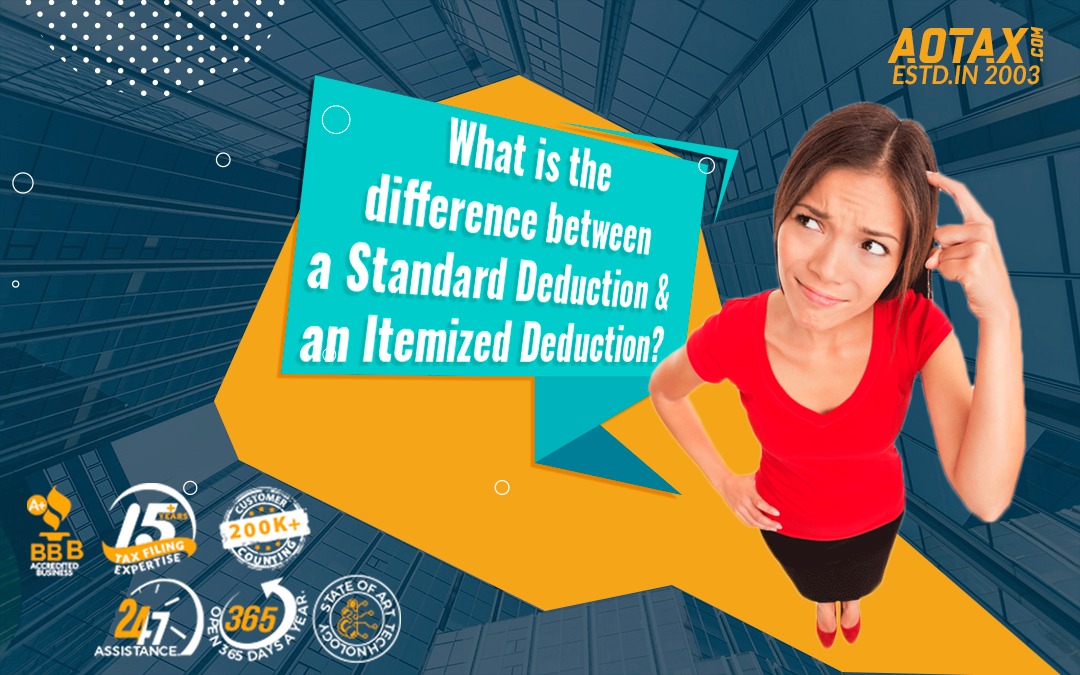
What is the difference between a Standard Deduction and an Itemized Deduction
What is the difference between a Standard Deduction and an Itemized Deduction?
While filing your federal taxes, there are several aspects that you need to be cognizant about. Of those many, two terms that will crop up the most are a standard deduction and itemized deduction. Quite a few taxpayers get confused when it comes to these two deductions. So, here are the differences.
Standard Deduction
As the name suggests, it is a fixed dollar value. This reduces the net amount that your tax calculations are based on. The following are the standard deductions for the current year.
- For taxpayers who are single or are married and filing separately, the deduction stands at $12,000.
- For taxpayers who are married filing jointly or are qualifying widow(er), the deduction stands at $24,000.
- For taxpayers who are the head of the household, the deduction stands at $18,000.
The standard deduction limit increases by a considerable margin if you are either visually impaired or above the age of 65 years old. For taxpayers who are either single or the head of the household, the amount increases by $1,550 and it increases by $1,250 if the taxpayer is a qualifying widow(er) or is married.
The numbers suggest that two out of every three tax filings, claim the standard deduction. Here are some other benefits of standard deductions.
- Standard deductions do not require any sort of records or receipts for various expenses, in the event that you are audited by the IRS.
- A standard deduction ensures that you can opt for a deduction even if you have no expenses that can qualify for itemized deductions.
- Standard deduction eliminates the need to itemize expenses such as charity or medical expenses.
Itemized Deduction
As one would come to expect, Itemized deduction also helps you knock off some dollars from your taxable income. For example, if you were in the 22% tax bracket, every $1000 that you list in the itemized deduction would reduce your tax liability by $220.
Itemized deductions on the Schedule A of your Form 1040 would let you benefit from the following.
- If you had expenses out of your pocket when it comes to dental or medical expenses.
- If your itemized deductions sum up to be more than what your standard deductions account for.
- If you made donations to charities that are in the qualified list.
- If as an employee, you had a large expense that has not been reimbursed.
- If you had large miscellaneous expenses that have not been reimbursed.
- If you had a large casualty that is not covered as insurance such as fire, wind, theft etc.
- If you paid any mortgage interest or real estate taxes, you can claim them as well.
There is a certain limitation when it comes to itemized deductions. If your AGI or adjusted gross income is more than any of the following, the limitations kick in.
- For a single taxpayer, the limit is $261,500.
- For taxpayers who are the head of the household, the limit is $287,650.
- For taxpayers who are married but filing separately, the limit is $156,900.
- For taxpayers who are married filing jointly or qualifying widow(er), the limit is $313,800.
There are several instances, where opting for itemized deduction is more beneficial. With itemized deductions, you can claim for a larger tax benefit than what you would have done otherwise with standard deductions. As many as 103,301,532 taxpayers opted for Standard Deductions in the previous tax filing year versus 45,610,227 taxpayers who filed for Itemized Deductions. Thus, you can choose either depending on your expenses.




Recent Comments